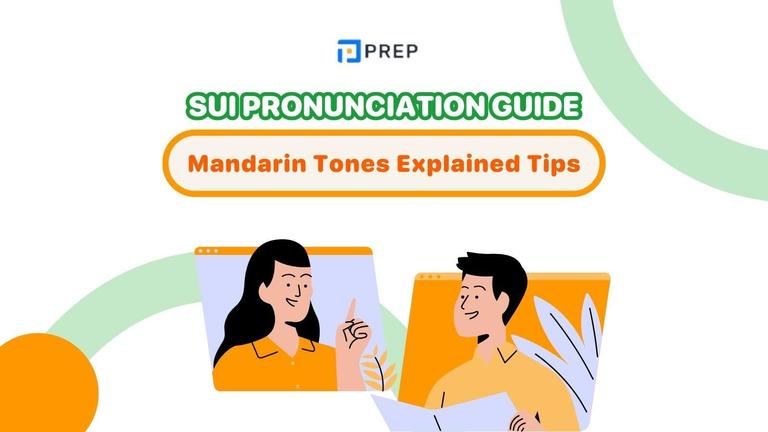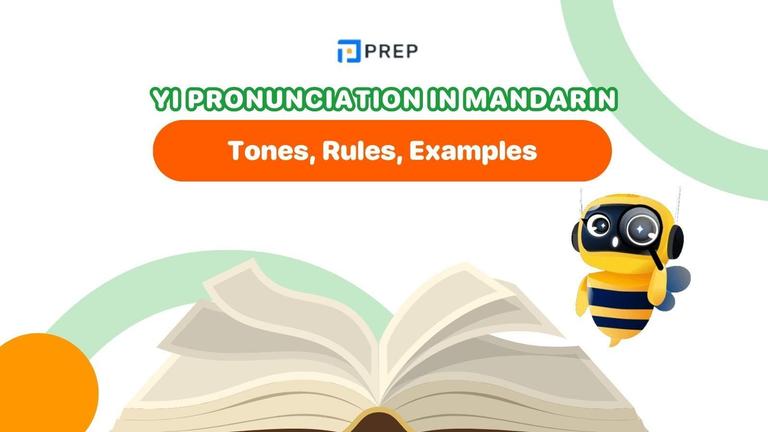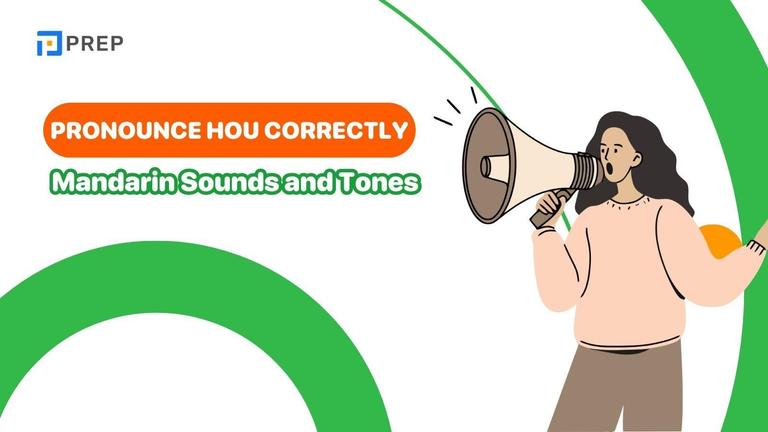How to Write and Use And in Chinese Characters
In Chinese, there's more than one way to say “and.” From 和 (hé) to 跟 (gēn), 与 (yǔ), and 以及 (yǐjí), each character has unique meanings and usage rules. This guide shows you how to write them and explains when to use each — whether in casual speech, formal writing, or artistic expression.
I. What Does “And” Mean in Chinese?
In English, the word “and” feels straightforward — a universal connector between words, ideas, and actions. But in Chinese, there’s no single character that directly maps onto “and” in every situation.
Instead, Mandarin uses several different characters to express the idea of “and,” each one context-dependent. The most common and beginner-friendly option is 和 (hé), typically used to link nouns. However, you’ll also encounter 与 (yǔ), 跟 (gēn), and 以及 (yǐjí), each with its own tone, structure, and level of formality.
These words may all translate to “and,” but they’re not interchangeable. They serve different grammatical functions and appear in different types of communication — from everyday conversation to formal writing and written lists.
I. How to Write And in Chinese Characters
While “and” is a single, simple word in English, expressing it in Chinese requires recognizing several characters, each with distinct meanings, structures, and writing systems. In this section, we’ll look at how to write the four main characters used for “and” in Chinese: 和 (hé), 与 (yǔ), 跟 (gēn), and 以及 (yǐjí).
1. The Character 和 (hé)
The character 和 (hé) is the most common way to express “and” in Chinese, especially in everyday conversation and standard writing. It’s typically used to link nouns, noun phrases, or subjects, similar to how “and” is used in English.
Pronunciation
- Pinyin: hé
- Tone: Second tone (rising)
- It’s pronounced gently, almost like “huh” with a rising intonation.
Meaning and Function
In most contexts, 和 means “and” in the sense of A and B. It connects two or more nouns, showing that they are grouped together or involved in the same action. Importantly, 和 does not link verbs or whole clauses — a mistake common among new learners.
- Correct: 我喜欢茶和咖啡。
(Wǒ xǐhuān chá hé kāfēi.)
“I like tea and coffee.” - Incorrect: 我喝和吃。 ✘
(Correct: 我吃东西,也喝水。)
Stroke Order and Writing
- Simplified form: 和
- Traditional form: Also 和 (same in this case)
Stroke order for 和 typically begins with the radical 禾 (grain), followed by 口 (mouth). It has 8 strokes in total.
2. The Character 与 (yǔ)
The character 与 (yǔ) is another way to express “and” in Chinese, but it carries a more formal tone than 和 (hé). You’ll encounter 与 more often in written Chinese, especially in official documents, academic texts, and formal reports.
Pronunciation
- Pinyin: yǔ
- Tone: Third tone (dipping)
Make sure to maintain the tone distinction, as 与 can be confused with similar-sounding words if tones are not pronounced clearly.
Meaning and Function
与 typically functions just like “and,” linking nouns or noun phrases. It can also sometimes carry the meaning of “with" or “together with," depending on context. Compared to 和, 与 is seen as more literary, elegant, or academic.
Example:
图书馆与阅览室禁止吸烟。
Túshūguǎn yǔ yuèlǎnshì jìnzhǐ xīyān.
“Smoking is prohibited in the library and the reading room.”
In modern spoken Chinese, 与 is rare and sounds overly formal in casual conversation.
Stroke Order and Writing
- Simplified form: 与
- Traditional form: 與
与 has 3 strokes in simplified form, making it relatively easy to write, though its traditional form is more complex.
3. The Character 跟 (gēn)
The character 跟 (gēn) is often translated as “and” or “with” in Chinese, but unlike 和 (hé) or 与 (yǔ), it is used primarily in spoken language and carries a more conversational tone.
Pronunciation
- Pinyin: gēn
- Tone: First tone (high and level)
The pronunciation is clear and straightforward — pronounced like “gun” but with a high tone.
Meaning and Function
In daily speech, 跟 connects people or things involved in the same action or interaction. It’s commonly used to express “A and B together,” or “A with B,” especially when talking about doing something with someone.
Example:
我跟朋友去看电影。
Wǒ gēn péngyǒu qù kàn diànyǐng.
“I went to the movies with my friend.”
It is also used in other sentence structures as a preposition meaning “with,” but here we are focusing on its use similar to “and.”
Stroke Order and Writing
- Simplified form: 跟
- Traditional form: Also 跟
It consists of the "foot" radical (⻊) on the left, indicating action or movement, and 艮 on the right.
Stroke count: 13 strokes
Note: While 跟 can often be translated as “and,” it's important not to overgeneralize its use. Stick to familiar sentence patterns at first, and observe how native speakers use it in context.
4. The Character 以及 (yǐjí)
The phrase 以及 (yǐjí) is another way to express “and” in Chinese, often translated as “as well as” or “and also.” Unlike 和 (hé) or 跟 (gēn), 以及 is used almost exclusively in written Chinese, particularly in formal or academic contexts.
Pronunciation
- Pinyin: yǐjí
- Tones: Third tone + Second tone
The emphasis is placed on clarity between the two syllables; avoid blending them in rapid speech.
Meaning and Function
以及 connects items in a progressive or additive relationship, often used in written lists that expand or build on previous elements. It implies inclusion or extension, typically toward the end of a phrase or sentence.
Example:
公司提供午餐、饮料,以及交通津贴。
Gōngsī tígōng wǔcān, yǐnliào, yǐjí jiāotōng jīntiē.
“The company provides lunch, drinks, and transportation allowance.”
Here, 以及 emphasizes the final element in a list and adds a sense of completeness or formality.
Stroke Order and Writing
- Simplified form: 以及
- Traditional form: 以及 (no change)
The component characters are: - 以 = “via, by means of”
- 及 = “reach, extend to”
III. When to Use 和, 与, 跟, and 以及
Although all four of these Chinese words — 和 (hé), 与 (yǔ), 跟 (gēn), and 以及 (yǐjí) — can be translated as “and,” their usage depends on the formality, sentence structure, and context. Choosing the right one ensures your Chinese sounds both natural and grammatically correct.
Everyday Conversations with 和 and 跟
- Use 和 to connect nouns in casual speech or simple statements.
Example: 我喜欢茶和咖啡。I like tea and coffee. - Use 跟 in spoken Chinese when referring to doing something with another person.
Example: 我跟姐姐去买菜。I went grocery shopping with my sister.
Note: In casual speech, 和 and 跟 are sometimes interchangeable, but 跟 adds a slight sense of action or closeness between people.
Formal Writing with 与
- 与 is typically reserved for written or formal contexts, such as reports, announcements, agreements, or academic articles.
Example: 合同双方应遵守与履行义务。Both parties must comply with and fulfill their obligations. - Avoid using 与 in everyday conversation, as it may sound awkward or exaggeratedly formal.
Written Lists with 以及
- 以及 is used to introduce the final element in a list and carries the meaning “as well as.”
Example: 我看了书、文章,以及新闻。I read books, articles, and the news. - It is rarely used in speech, but is common in professional writing, product descriptions, and business communication.
Use this quick guide to decide which word to use:
- Use 和 for everyday nouns.
- Use 跟 for speaking about activities with people.
- Use 与 in formal or written language.
- Use 以及 to complete a list in formal writing.
Understanding these distinctions not only improves your grammar but also helps you communicate with greater nuance and confidence in both speech and writing.
IV. Cultural and Artistic Perspectives
Beyond its grammatical function, the Chinese character for “and” — especially 和 (hé) — carries rich cultural, symbolic, and artistic meaning. Understanding these layers gives deeper insight into how language reflects values like harmony, connection, and balance in Chinese society.
“And” in Chinese Calligraphy
The character 和 is a popular choice in Chinese calligraphy, not just for its linguistic simplicity but also for its cultural symbolism. While it means “and” in modern grammar, its historical meanings include "peace," "harmony," and "togetherness" — qualities that resonate deeply in Chinese philosophy, especially Confucianism and Daoism.
Calligraphers often choose 和 for wall scrolls, couplets, and personal seals to invoke a sense of unity and calm. The character’s symmetry and fluid structure also make it visually elegant and favored in ink painting.
Using “And” Characters in Tattoos or Symbols
Outside formal language and art, characters like 和, 与, or even 以及 occasionally appear in tattoos, logos, or design motifs, especially when people seek to express ideas like connection or peace.
However, it’s essential to understand both the linguistic and cultural context before using these characters as visual symbols. Chinese characters carry layered meanings and can easily be misunderstood or misused if taken too literally or out of context.
Whether you're appreciating a piece of calligraphy or considering a symbolic use of a Chinese character, recognizing the deeper dimensions of words like 和 helps you engage with the language more respectfully and meaningfully.
Mastering how to use “and” in Chinese characters—whether through 和, 跟, 与, or 以及—goes beyond simple translation. It builds the foundation for clearer expression, better sentence structure, and stronger cross-cultural confidence. By learning the meanings, nuances, and appropriate usage of each term, you’ll communicate more naturally in both spoken and written Mandarin.
These small distinctions make a big difference in fluency. Whether you're preparing for an exam, writing a professional email, or having a casual conversation, knowing which “and” to use brings precision to your Chinese. Keep exploring these language layers with PREP and take the next step toward confident, culturally grounded Mandarin.

Hi I'm Chloe, and I am currently serving as an Product Content Administrator at Prep Education. With over five years of experience in independent online IELTS study and exam preparation, I am confident in my ability to support learners in achieving their highest possible scores.
Comment
Premium content
View allPersonalized roadmap
Most read












